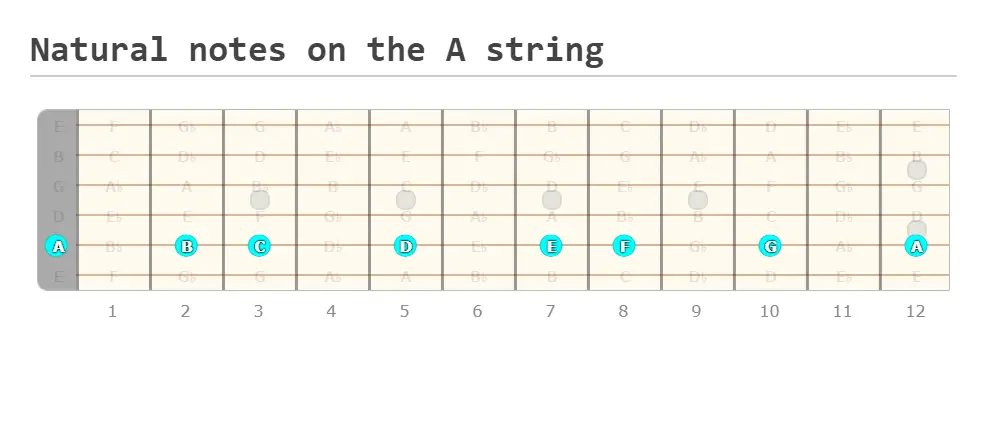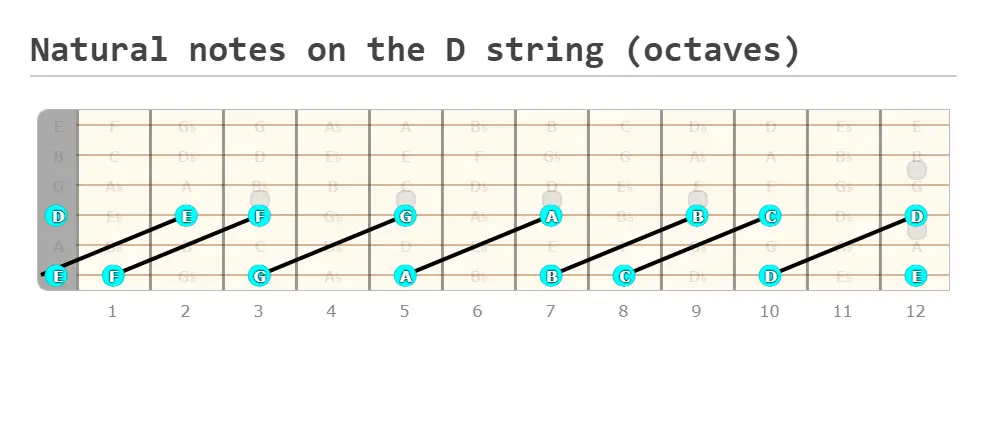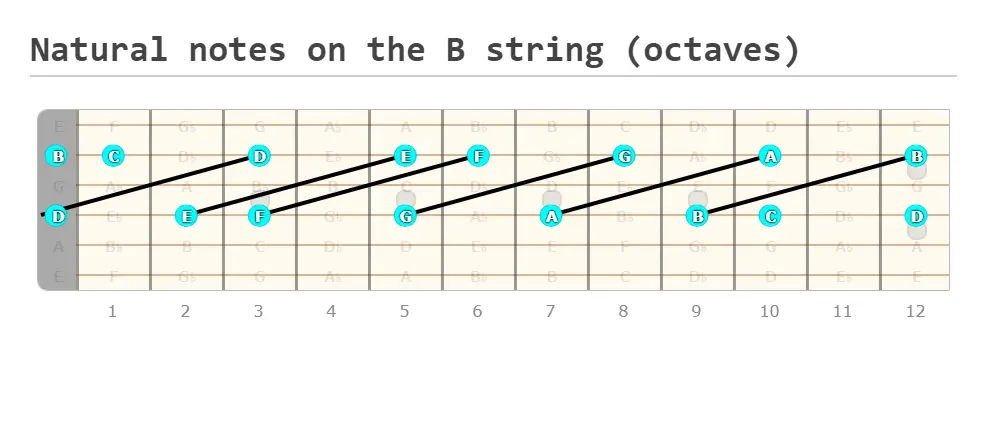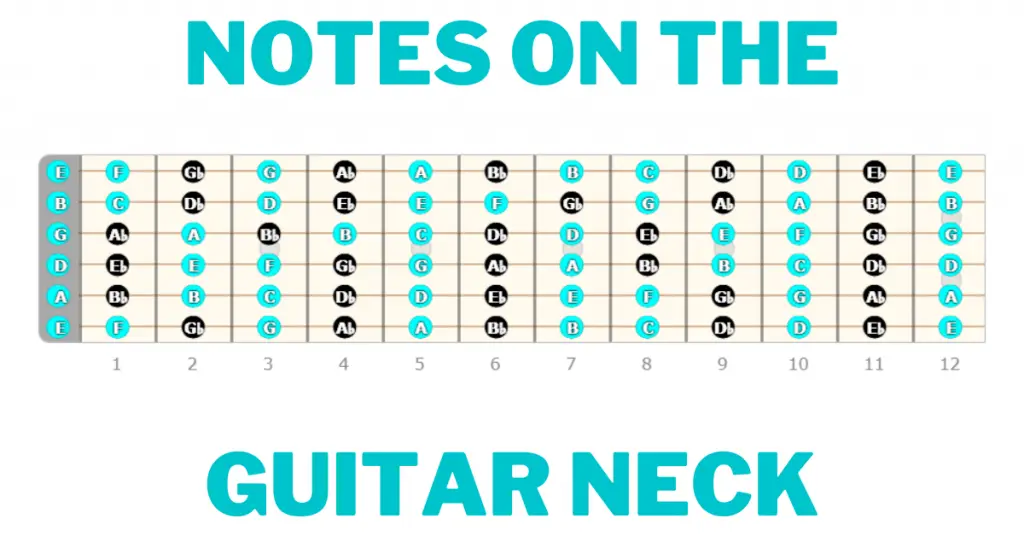Table of Contents
In this lesson you’ll learn the notes on the guitar neck with the easiest step-by-step method!
Let’s dive into the lesson.
Step 1: Notes of The Open Guitar Strings
Learning the note names starts with learning the open guitar string names.
From the lowest note to the highest note, the string names are:
E-A-D-G-B-E
The strings are often referred to as numbers: 6-5-4-3-2-1
You can remember these notes by using popular mnemonic’s/phrases such as:
Eddie-Ate-Dynamite-Good-Bye-Eddie
You can learn more about the open string names here.
Step 2: Learn the natural notes on the Low E String (the 6th string)
After learning the open string notes you’ll want to learn the natural note names on the Low E string, your 6th string.
These notes starting from E are E-F-G-A-B-C-D.
Important to remember!: There is no sharp between E and F, or between B and C.
You needn’t bother with learning accidental notes (sharps and flats), because you’ll know where they are if you know the natural note names.

As you can see, I have included both E strings in the fretboard diagram above. This is because they have the same notes. After all, they start with the same note.
After learning these natural notes, you now know 1/3 of the notes on the guitar neck! Piece of cake, right?
Step 3: Learn the natural notes on the A string (the 5th string)
Your next step is to learn the natural notes on the A string.

Once you have these natural notes memorized, you’ll know 1/2 of the notes on the guitar neck!
Step 4: Learn the notes on the D, G, and B strings
Now that you have 1/2 of the notes memorized, these notes being on the E and A strings, the notes names on these next 3 strings will be easy to memorize.
One simple way to find these notes is through the use of octaves.
You can find octaves for the Low E and A strings by moving down 2 strings and up 2 frets.
You can find octaves for the D and G strings by moving down 2 strings and up 3 frets, as opposed to 2 frets.
Natural notes on the D string

Natural notes on the G string

Natural notes on the B string

Step 5: Put the guitar notes names into practice
Step 5 is guitar practice.
There are a few ways to practice note memorization.
- Say a natural note out loud, then find that note on the fretboard. Find all of the notes locations.
- Reading notation forces you to learn the notes on the guitar neck, so try it out.
- Playing to key-specific backing tracks will allow you to put your note names into practice. Start with a simple backing track in the key of A Minor or E Minor. You can easily start improvising to backing tracks if you know pentatonic scales.
Notes on the guitar neck chart (natural and flat notes)
Here’s a fretboard diagram showing the natural and flat notes on the guitar neck.
It’s a helpful reference.

Natural Notes on The Guitar Neck
Lastly, here are all of the natural notes in a single diagram.

Posts related to learning notes on the guitar neck
Free Guitar Scales Chart for Beginners
Major Scale Formula Definition (Guitar)



